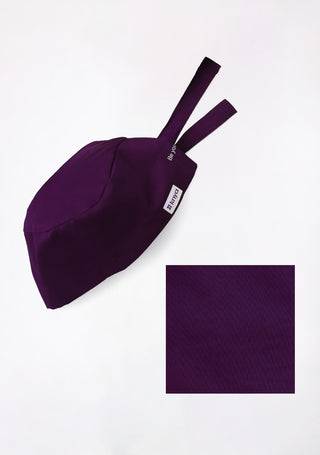A broken stethoscope doesn’t always mean it’s the end of the road. Many issues—whether it’s poor sound, cracked tubing, or faulty eartips—can be easily resolved at home with a little patience and the right replacement parts. However, knowing when to DIY and when to call in the pros is key to ensuring you’re always equipped with a reliable tool.
So, before you toss out that malfunctioning stethoscope, give it a proper check-up of its own. A little fixing might be all it needs to bounce back to life.
Understanding the Anatomy of a Stethoscope
Before diving into the solutions, it helps to understand the main parts of a typical stethoscope:
- Eartips – The parts that go into your ears.
- Ear Tubes – The metal tubes connected to the eartips.
- Tubing – The flexible rubber or PVC part that carries sound.
- Chestpiece – The part that includes the diaphragm and/or bell and is placed on the patient.
A malfunction in any of these components can lead to poor sound quality—or no sound at all.
Don't wait! Secure your high-quality Knya's 6sense Stethoscope now and experience precision in every heartbeat. Book your stethoscope here.
Common Stethoscope Problems and DIY Fixes
Poor Sound Quality
Symptoms: Sounds are muffled, faint, or unclear.
Possible Causes & Fixes:
- Clogged Ear Tips: Over time, earwax, dust, and debris can clog the eartips. Simply remove them and clean them with warm, soapy water or alcohol wipes. Dry thoroughly before reattaching.
- Damaged or Hardened Tubing: Tubing may become stiff, brittle, or cracked with age, especially if exposed to body oils or alcohol. If cracks are small, you might be able to wrap them temporarily with electrical or medical-grade tape—but this is only a short-term solution. Tubing replacement is usually best (and available for many popular stethoscope models).
- Loose Chestpiece: Check if the diaphragm or bell is securely fastened. Sometimes it just needs to be twisted back into place.
- Improper Fit: Make sure the headset is angled forward (toward your nose) when placed in your ears. This ensures a proper acoustic seal.
One Side Not Working
Symptoms: Sound is only heard through one ear, or the stereo balance feels off.
Possible Causes & Fixes:
- Eartips Not Seated Properly: Remove and reattach them. Some eartips have a “click” fit—if they’re loose, sound won’t travel effectively.
- Internal Blockages: Run a thin, flexible wire or compressed air through the tubing to clear any hidden obstructions. Be gentle to avoid damaging the inner walls.
- Rotating Chestpiece Not Aligned: Many stethoscopes have a tunable or rotating chestpiece that must be aligned properly with the tubing. Make sure the open side of the chestpiece corresponds with the side you're using.
Personalize your practice. Shop for our new 6sense Stethoscope collection, featuring three beautiful color options.
Tubing Damage or Deterioration
Symptoms: Cracks, holes, stiffness, or discoloration in the tubing.
DIY Fix: If your stethoscope model allows tubing replacement (like the Littmann Classic or Cardiology series), you can order replacement tubing and swap it out yourself. You’ll need to:
- Detach the chestpiece and ear tubes.
- Slide off the old tubing (might require a bit of elbow grease).
- Attach the new tubing firmly, ensuring an airtight seal.
Temporary Fix: As mentioned, minor cracks can be taped over. Use it only until you can replace the tubing or the entire stethoscope.
Damaged Diaphragm or Bell
Symptoms: No sound or faint sounds when auscultating.
Fix:
- Cracked Diaphragm: You can replace the diaphragm on most high-quality stethoscopes. Buy the compatible diaphragm kit and follow instructions to install it.
- Loose Parts: Make sure all parts of the chestpiece are screwed or snapped in correctly.
If the diaphragm is missing or completely torn, you’ll need a replacement kit. For dual-head stethoscopes, ensure you are using the correct side for the sound frequency you're trying to hear.
When to Call in the Professionals?
If you’ve tried the above steps and your stethoscope still isn’t working correctly, it might be time to seek professional repair services. Most reputable brands offer customer service and repair options.
Professional Repair Services Include:
-
Tubing and Diaphragm Replacement
-
Acoustic Testing
-
Chestpiece Recalibration
-
Warranty Repairs
Tip: If your stethoscope is under warranty (usually 2 to 7 years depending on the brand), contact the manufacturer first. They might repair or replace parts for free or at a nominal cost.
Tips to Prevent Damage and Extend Stethoscope Life
- Avoid Neck Storage: Hanging the stethoscope around your neck may expose it to body oils, causing the tubing to harden or crack prematurely.
- Clean Regularly: Wipe down your stethoscope with alcohol-based wipes after each use, especially the eartips and chestpiece.
- Avoid Excessive Heat: Don’t leave it in hot cars or direct sunlight.
- Proper Storage: Store in a case or pouch when not in use.
- Use With Care: Don’t bend or twist the tubing aggressively.
When to Replace Instead of Repair
There comes a point when it’s more practical to replace the stethoscope entirely. Here are some signs:
- Tubing is extremely brittle or cracked throughout.
- Multiple parts are malfunctioning.
- The cost of repair exceeds 50% of a new unit.
- It's an older model with no available replacement parts.
- You want to upgrade to a more advanced or specialized stethoscope.













